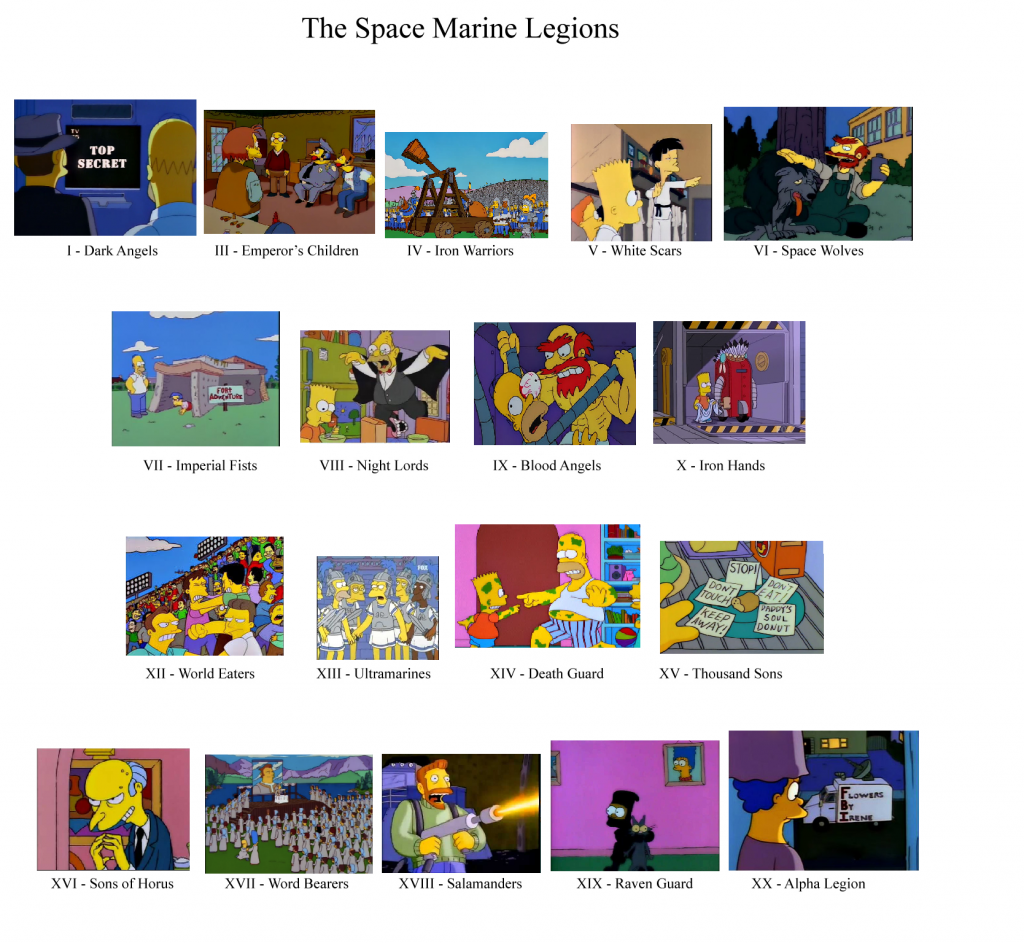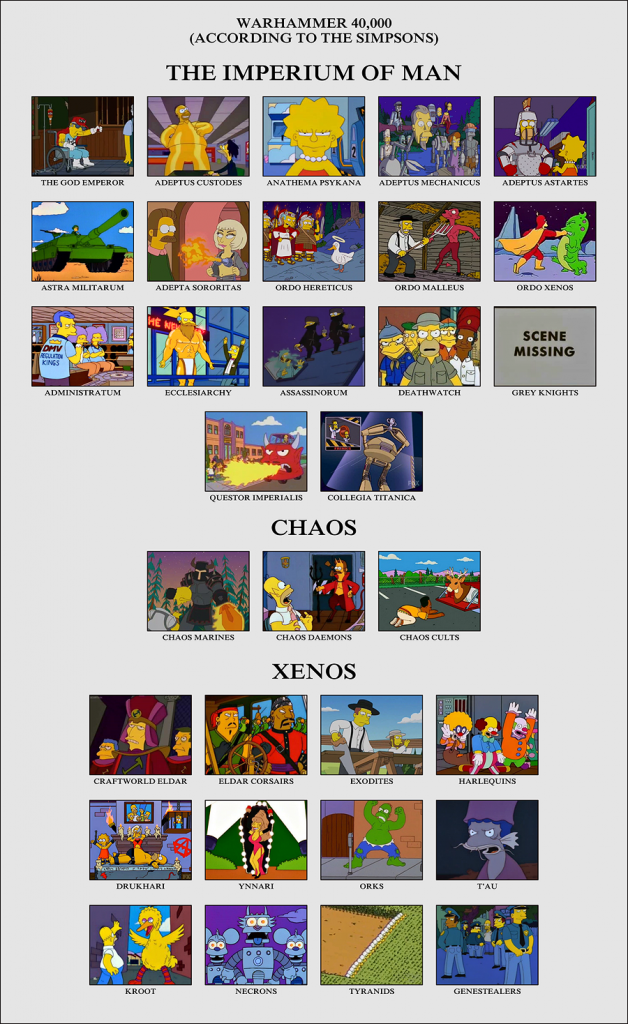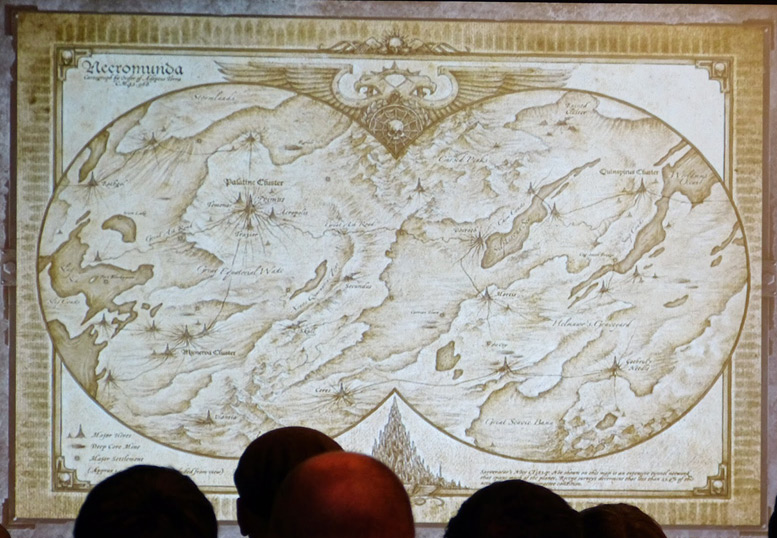Update: Thank you Mr Newman for taking an interest in this project, and supplying a few tips! I am not worthy! ;D
One of my favourite things about Kim Newman’s Anno Dracula series is reading the annotations – both those Mr Newman provides himself, and the ones various people have put together online.
Unfortunately I haven’t been able to find any annotations for the highly entertaining novella Vampire Romance. So I figured, why not produce some myself?
Now, when it comes to scholarship I am a dilettante at best. I’m not going to be searching through dusty tomes to track down every single reference. I shall instead mostly be throwing names and terms at Professor Google and seeing what comes back. And I’m not going to be spending huge slabs of time – I’ll just do a chapter here and there. It’s a long (or at least prolonged) project to which I shall be making occasional updates. So don’t expect the whole thing to be complete any time soon! But do check back now and then.
So without any further ado, here we go…
Chapter 1: Genevieve Bobs Her Hair
The chapter title is take from Bernice Bobs Her Hair, a 1920 short story by F. Scott Fitzgerald.
Genevieve is of course Mr Newman’s original vampire character Geneviève Dieudonné – specifically Geneviève Sandrine d’Isle Dieudonné, as opposed to her other versions (or “trans-continual cousins”) from Newman’s other series.
…Her appointment at M. Eugene was for just after sunset…
M Eugene is Eugene Suter, a Swiss immigrant who along with Isidoro Calvete popularised the perm in post WWI London.
…The salon was Cox and Box…
“Cox and Box”, meaning “to take turns” derives from a comedic play Box and Cox – A Romance of Real Life in One Act by John Maddison Morton, first produced in 1847. It concerns two boarders unknowingly sharing a room, one during the day and one at night and the chaos that ensues when they discover each other. It was adapted into a comic opera Cox and Box by F. C. Burnand and Arthur Sullivan in 1866.
…the pre-broken ‘Transylvanian’ crenelations of Tower Bridge…
Tower Bridge was constructed between 1886 and 1894 in a Victorian Gothic style. Prince Consort Dracula obviously had more influence on its design – and perhaps sped up the construction – in the AD universe.
…the ugly bat frescoes of the Sir Francis Varney Memorial…
Sir Francis Varney (from Varney the Vampire; or, the Feast of Blood, published as a serial between 1845 and 1847) was Governor of India under Dracula and came to a rather nasty end during the Prince Consort’s overthrow. The timeline doesn’t work out, but I can’t help but wonder if the Varney Memorial takes the place of our universe’s Albert Memorial.
…She loitered over a thimble of mouse-blood in the Maison Lyons on Shaftsbury Avenue…
J. Lyons and Co. was a restaurant, hotel and food manufacturing company founded in 1884 and eventually shutting down in 1981. In addition to a chain of tea shops they ran a number of more upmarket art deco ‘corner houses’ including the Maison Lyonses at Marble Arch and on Shaftsbury Avenue.
…Now, it was cocktails at the Criterion and a rag at the Troc…
The Criterion is the Criterion Restaurant at Picadilly Circus. The “Troc” is the Trocadero, another restaurant operated by J. Lyons and Co.
…the warm English comedian was ‘the Little Vamp’…
Charlie Chaplin’s ‘Little Vamp’ character is of course our universe’s ‘Little Tramp’.
…In the two-reeler One P.M…
One P.M. replaces One A.M. a 1916 comedy in which Chaplin depicts a drunk encountering various mishaps stumbling his way to bed (and eventually falling asleep in the bath!).
…posters advertising Oxo concentrated blood cubes, ‘Nutrax for Nerves’ and NetherBeast gramaphones…
Oxo cubes are concentrated beef stock, first produced in 1910 and still available today. Nutrax is a nerve tonic that features in the Dorothy Sayers Lord Peter Wimsey mystery novel Murder Must Advertise. NetherBeast is a reference to the 2007 office comedy movie Netherbeast Incorporated, which is based around a telephone company staffed by the undead.
…Kink-limbed and -backed stick-figure men followed a leader…
The Crook’s cypher would appear to be a reference to the Sherlock Holmes story The Adventure of the Dancing Men. As Holmes exists in the AD universe it is not out of the question that the Crook was inspired to create his cypher by the one in Holmes’s case (or vice-versa given the Crook’s extended history).
…even scientific thinkers like Edmond Cordery…
Edmund Cordery is from The Empire of Fear by Brian Stableford. He researches the scientific causes of vampirism in an alternate 17th century ruled by vampires (it does not end well for him).
…Max Planck’s Black Blood Refractive Postulate of 1902…
In our universe physicist Max Planck investigated black body radiation. In the AD universe his research was obviously a bit more esoteric.
…straightening curls with terrifying Heath Robinson contraptions…
William Heath Robinson (1872-1944) was an English cartoonist who became famous for illustrations of elaborate and ridiculous contraptions – similar to the American Rube Goldberg. He is mentioned as designing armaments for the British in The Bloody Red Baron – presumably he did his cartoons on the side.
…The warm blonde girl – Miss Bunting, according to her nametag…
Miss Bunting is Daisy Bunting, played by June Tripp in the 1927 silent Alfred Hitchcock film The Lodger: A Story of the London Fog. The movie (and the novel it is based on) are centered on the hunt for a Jack the Ripper style serial killer.
…back numbers of The Tatler somewhat surprisingly piled in Charles Beauregard’s Chelsea house…
The Tatler is a magazine focusing on high society and politics first published in 1901. Charles Beauregard is of course Mr Newman’s original character who features in many of the Anno Dracula and Diogenes Club stories.
…recognised the daughter of the millionaire Percy Browne…
Percy Browne should not be confused with British politician of that name who was born in 1923 and would hence would be a few months old at best at the time of the story. He is instead the millionaire father of Polly Browne from the 1954 musical The Boy Friend. Polly was portrayed by the model Twiggy in the 1971 movie adaption.
…She’d personally battened on half the young the young bloods in the Drones…
The Drones can be presumed to be the Drones Club from the works of P. G. Wodehouse – the first of many Wodehouse references in this story.
…Ivor Novello was carrying on with the drag artiste Handel Fane…
Ivor Novello (1893-1951) was a Welsh composer and actor and one of the most popular British entertainers of the first half of the 20th century. In a nice touch he stared as the title character in the already mentioned Hitchcock film The Lodger. Handel Fane (played by Esme Percy) is the cross dressing actor and killer in the 1930 Hitchcock film Murder!
…the organist Anton Phibes…
Anton Phibes is the title character – portrayed by the great Vincent Price – from the 1971 horror comedy film The Abominable Doctor Phibes. In the movie he is believed to have died in a car crash in 1921 but secretly survived with horrific injuries. Perhaps in the AD universe he overcame these by turning?
…a skirmish with Countess Verdel…
Countess Verdel (AKA ‘Ejacula’) was portrayed by Patricia Kennedy in the porn films Ejacula, la vampira and Ejacula 2, both from 1992 (thanks Mr Newman!).
…reading the latest number of British Pluck…
I can’t find anything specific for British Pluck either, although a collection of articles from The Boys Own Paper titled The Best of British Pluck was published in 1977 – perhaps suggesting that’s the name of the publication in the AD universe.
…Next up was a floppy haired male dandy…
I strongly suspect that this is Dorian Grey. Oscar Wilde of course appears in Anno Dracula, but Grey is too good a character to leave out on that kind of technicality!
…Bywaters had gone to the gallows… …Thompson was hanged too…
Frederick Bywaters and Edith Thompson were executed in January 1923 for the murder of Thompson’s husband Percy. They had been having an affair and exchanged letters in which Edith encouraged Bywaters to “so something desperate” to free her from Percy. Despite Thompson carrying out the deed by himself – and a petition for mercy signed by almost a million people – they were both convicted and hanged.
…The dreadful Dr Sheppard, guilty of the Ackroyd murder...
Dr Sheppard is from Agatha Christie’s third Hercule Poirot novel The Murder of Roger Ackroyd, published in 1926.
…Caroline Reboux must do a roaring trade…
Caroline Reboux (1837-1927), the “Queen of the Milliners” was a French milliner and fashion designer.
…figure-flattening Eulalie Soeurs slips…
Eulalie Soeurs is the name of the lingerie shop owned by would be fascist dictator Roderick Spode in P. G. Wodehouse’s works. There will be more about him later.
…Garrard & Co. carried strings of all-black pearls…
Garrad & Co. are a famous London jewellery manufacturer founded in 1735.
…He stood near the door, waiting for her…
The man by the door is Edwin Winthrop, another of Mr Newman’s recurrent characters. He first appeared and is a major character in The Bloody Red Baron.
That’s it for Chapter 1!
Chapter 2: Mildew Manor
I am unable to find a specific reference for Mildew Manor, although it seems a somewhat common phrase on certain hotel review websites.
…bloody Aunt Agatha…
Aunt Agatha is Agatha Gregson, Bertie Wooster’s fearsome and least favourite aunt in P. G. Wodehouse’s Jeeves and Wooster stories. Bertie claims that she “kills rats with her teeth” and “is strongly suspected of turning into a werewolf at the time of the full moon”. In the AD universe either or both may be literally true!
…to vampire eyes, human veins throbbing red and blue in the moonlight…
If it wasn’t for the fact that the movie came out two years after the publication of Vampire Romance I’d suspect this description of vampiric sight was taken from the rather dull 2014 movie Dracula Untold.
…She’d heard that from Cousin Bertie…
Bertie Wooster himself, requiring ‘someone’ to take him firmly in hand.
…Miss Carlotta Francis, éditrice of The Dark Flame…
Carlotta Francis is taken from an episode of Law and Order: Criminal Intent. She wrote a series of vampire novels (featuring a ‘Lord Fantomas’) in the 1950s before committing suicide. There seems to be a remarkable level of interest in her online with people searching for her (entirely fictional) books.
…Rudolf Valentino as Magnus in The Count, the film of the famous novel by Elinor Glyn…
Rudolph Valentino (1895-1926) was one of the first movie idols, who was already a sensation before his untimely death at age 31 sent his female fans into hysteria. One of his most popular films was 1921’s The Sheik – based on the novel by Edith Maude Hull – in which he played an imperious Arab who abducts a headstrong white woman (who then naturally falls in love with him). The Count is clearly the AD universe’s version of the film – the plot described is an amalgam of The Sheik and elements from classic vampire and mummy films.
The name ‘Count Magnus’ may be taken from the M. R. James story of the same name, featuring the undead (or something) Swedish Count Magnus de la Gardie. Or it may refer to the vampire lord Count Magnus Lee from the Japanese manga series Vampire Hunter D.
Elinor Glyn (1864 – 1943) was a British novelist and screenwriter who popularised the concept of It (in terms of charisma and sexual magnetism). She wrote a series of romantic novels that scandalised polite society and then moved on to screenplays in 1919. Valentino starred alongside Gloria Swanson in the film version of her novel Beyond the Rocks in 1922.
…Lady Diana, played by the kohl-eyed Norma Desmond…
Norma Desmond is the eccentric/insane washed-up silent movie star portrayed by Gloria Swanson in Billy Wilder’s classic 1950 film Sunset Boulevard. Mr Newman is clearly having a ball with his references here.
…The Dark Flame hinted the Italian actor had turned in secret for the role…
Given the unpredictable effects of vampirism on mirrors and film in the AD universe this would be an incredibly risky move for an actor!
..rat-ears, wolf-fangs, enlarged and almost hairless skulls, talons and long, long faces…
A fine description of Max Schreck as Count Orlok in the 1922 Dracula rip-off Nosferatu. I guess this makes The Count the AD version of The Sheik, On the Rocks, and Nosferatu all at once!
Orlok himself of course appears in Anno Dracula and The Bloody Red Baron.
…and is English-born to boot…
Valentino’s Sheik turns out to be respectably English as well, rather than a nasty foreigner.
…whereas Madame Glyn writes that the Count impatiently tears off her nightie altogether…
The movie version of The Sheik attracted some criticism from fans of the novel for omitting a rape scene.
…the (drippy, if appealingly floppy-haired) violin virtuoso Ralph Levé…
I can’t track down anything regarding this student of Paganini. I have an inkling I’m missing something extremely obvious…
…George Valentin as Rupert of Hentzau in The Vampyres of Zenda…
Anthony Hope’s popular 1894 adventure novel The Prisoner of Zenda invented the Mitteleuropean kingdom of Ruritania, from whence hail several characters in the AD universe (including Rupert himself who turns up in Anno Dracula). Versions were filmed in 1913, 1915 and 1922, the latter presumably the version referenced here. One wonders if the AD version of the story is at least semi-historically accurate.
George Valentin is a silent movie start who encounters problems moving to sound in the 2011 film The Artist. Jean Dujardin won the Best Actor award at the 2012 Oscars for the role.
…stiff Lord Godalming (Lewis Stone)…
Lord Godalming is of course from Dracula and one of the major characters in Anno Dracula. Given that he was framed for the Silver Knife/Jack the Ripper murders it seems a bit strange to have him appear as a movie hero – perhaps Sherlock Holmes spread word of his innocence after the events of The Bloody Red Baron?
Lewis Stone (1879-1953) played the title role (Rudolf Rassendyll) in the 1922 version of The Prisoner of Zenda.
…to begin serialising Son of the Count…
The Son of the Sheik was the 1925 sequel to The Sheik written by Edith Maude Hull. Presumably Elinor Glyn got her sequel written a bit faster. It was filmed in 1926 with Rudolph Valentino reprising his role, as well as taking on the title character. It was Valentino’s last film – he collapsed and died while on a promotional tour two weeks before its premiere.
…Otterbourne’s Nitelite Saga…
Salome Otterbourne is a romance novelist from Agatha Christie’s 1937 Hercule Poirot novel Death on the Nile. Her saga full of glittering vampires and swooning heroines can only be the AD version of Stephanie Meyer’s Twilight Saga (as such it’s a shame Jacqueline de Bellefort didn’t shoot her a couple of decade earlier…).
…Banks’s Mal de Mer mysteries…
Rosie M. Banks is a romance novelist from the Jeeves and Wooster stories of P. G. Wodehouse. Her habit giving characters names like ‘Snookie’ and ‘Lurlene’ suggests her works are the AD version of Charlaine Harris’s Southern Vampire Mysteries, (featuring Sookie Stackhouse) which have been adapted into the HBO television series True Blood.
…Vanes’s Vampyrrhic Chronicles…
Harriet Vane is a mystery writer and later wife of Lord Peter Wimsey in the works of Dorothy L. Sayers. Her books written from the vampire’s point of view and full of long lectures on ancient history and Roman Catholicism must be Anne Rice’s Vampire Chronicles. One wonders if Lestat de Lioncourt – who has a cameo in Anno Dracula – features.
…Bram Stoker’s what-might-have-been novel…
Dracula of course!
…articles by Dione Fortune or Luna Bartendale…
Dione Fortune (1890-1946) was one of the most significant and influential occultists of the 20th century. She wrote a vast number of articles and books on occult and magical themes, and several occult novels.
Luna Bartendale is an occult detective created by Jessie Douglas Kerruish. She appeared in 1936’s The Undying Monster where she displays a number of psychic powers.
And that’s chapter 2!
Chapter 3: ‘Tell Tom Tildrum that Tim Toldrum’s Dead…’
The chapter title is from the traditional English folk tale The King of the Cats. In the story – first recorded in 1553 – a traveler hears a mysterious voice say “Tell Tom Tildrum that Tim Toldrum’s Dead”. On arrival at his destination he recounts this to his hosts, at which point their cat leaps up, says “Then I am King of the Cats!”, and vanishes up the chimney never to be seen again.
…’Sergeant Dravot,’ she acknowledged…
Sergeant Daniel Dravot is from Rudyard Kipling’s 1888 short story The Man Who Would be King. In the tale he and an associate carve out a small kingdom in remote Afghanistan by posing as gods, but their scheme is undone when Dravot is bitten by a local girl, revealing through his bleeding that he is merely a man. He is executed by being thrown into a gorge (it is tempting to suspect that in the AD universe the girl was a vampire, and Dravot revived as one of the undead after making the plunge).
Dravot was portrayed by Sean Connery in the 1975 movie of the story.
As an employee of the Diogenes Club Dravot has a recurring role in AD works.
…How long had the Diogenes Club been keeping this eye on her?…
The Diogenes Club was introduced by Arthur Conan Doyle in the 1893 Sherlock Holmes story The Adventure of the Greek Interpreter. In the Holmes stories it is merely a (somewhat unusual) gentleman’s club, however many writers have re-interpreted it as a front for British Intelligence due to its connections with Sherlock’s older brother Mycroft.
In addition to including the club in the Anno Dracula universe Mr Newman has written a series of other works focusing on it, featuring alternative versions of many AD characters.
…But also Katharine Reed…
Journalist Katherine Reed was created by Bram Stoker for Dracula, but later cut. Mr Newman resurrected her in Anno Dracula and she has featured in his AD works ever since.
…Jennifer Chevalier… Grace Ki, the Ghost Lantern Girl… Lady Jane Ainsley…
I have not had much luck tracking down Jennifer Chevalier – it’s apparently a very common name in the real world! A Jennifer Knight appears in the 1980s classic Knight Rider but this could simply be coincidence.
Grace Ki, the Ghost Lantern Girl appears to be Mr Newman original and is mentioned as a former student in The Secrets of Drearcliff Grange.
Lady Jane Ainsley is portrayed by Frieda Inescort in 1943’s The Return of the Vampire – an unofficial Dracula sequel starring Bela Lugosi as Armand Tesla (who shows up elsewhere in the AD universe). The first part of the film is set around 1920 and sees Lady Jane defeat Tesla – presumably this incident bought her to the attention of the Diogenes Club.
…If Harold Lloyd does it they give him the key to the city…
Harold Clayton Lloyd, Sr. (1893-1971) was a famous comedy actor and stunt performer. He is best remembered today for the iconic clock dangling scene in 1923’s Safety Last! Genevieve’s comment may simply be referencing the movie, but it’s equally possible that in the AD universe Lloyd climbed buildings in real life rather than just on film.
…my friend Catriona Kaye…
Catriona Kaye is one of Mr Newman’s original characters, first mentioned as Winthrop’s fiance in The Bloody Red Baron. Winthrop may be being coy by calling her his “friend” or his experiences during the way may have altered their relationship.
…the Cult of Saamri…
Saamri is a black magician who rises from the dead to take revenge on his murderers in the 1985 Bollywood horror film 3D Saamri. He was played by Anirudh Agarwal who also portrayed the similarly named undead monster Samri in the previous year’s Purana Mandir. The later is perhaps more likely to be the entity worshiped by the cult.
== To be continued! ==








